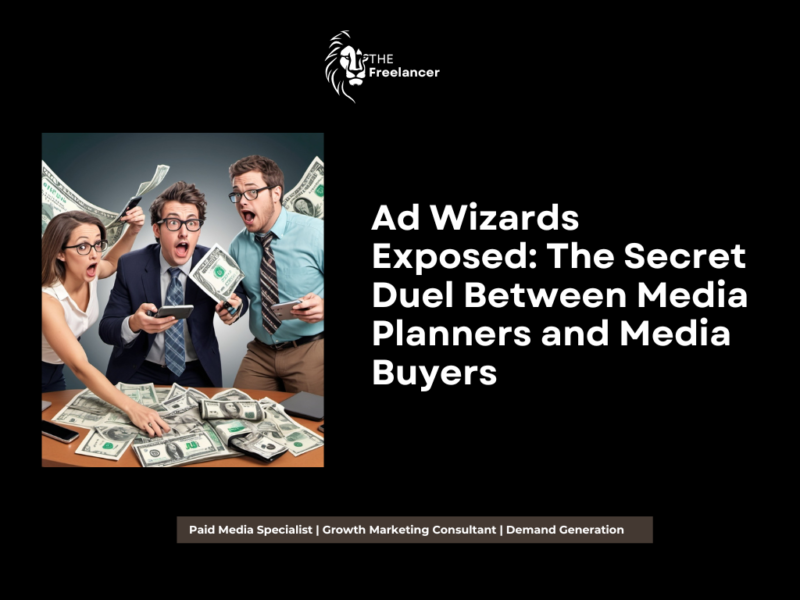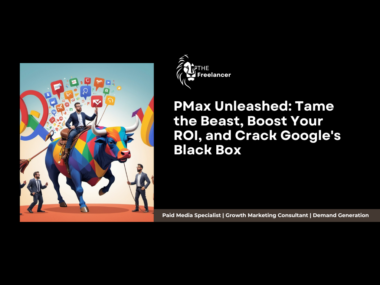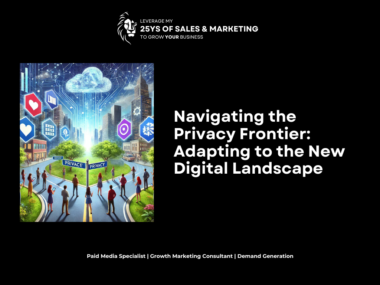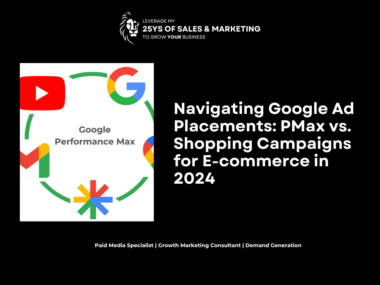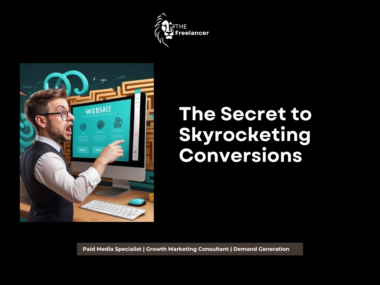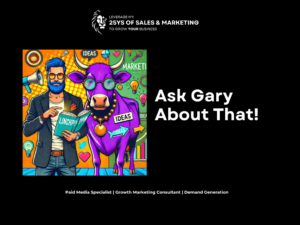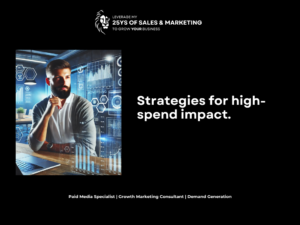In today’s digital age, where attention spans are shorter than a goldfish’s memory (and that’s being generous), understanding the nuances of media buying and media planning is crucial for any business looking to make a splash in the advertising ocean. These two disciplines form the backbone of successful marketing campaigns, working in tandem to ensure your message reaches the right audience at the right time, in the most effective way possible.
Think of media planning and buying as the architects and builders of your advertising strategy. While one designs the blueprint for success, the other brings that vision to life, brick by digital brick. Together, they create campaigns that don’t just reach audiences – they resonate with them, driving engagement, conversions, and ultimately, business growth. But what exactly sets these two roles apart? How do they complement each other? And most importantly, what impact do they have on the success of your marketing efforts? Grab your metaphorical snorkel, because we’re about to dive deep into the world of media planning and buying, exploring their differences, their importance, and the tricks of the trade that separate the pros from the amateurs. Whether you’re a seasoned marketing veteran or a business owner dipping your toes into the advertising waters for the first time, understanding these crucial aspects of marketing strategy can be the difference between a campaign that sinks and one that soars. So, let’s embark on this journey through the dynamic world of media planning and buying, where creativity meets strategy, and data drives decisions.
What is Media Planning?
Media planning is the strategic process of determining the best mix of media channels to deliver your message to the right audience at the right time. It’s like being the mastermind behind a heist movie, except instead of stealing diamonds, you’re capturing attention (and hopefully, wallets). Key components of media planning include:
- Audience Analysis: Understanding who your target audience is, what media they consume, and when they consume it. It’s like being a detective, but instead of solving crimes, you’re solving the mystery of consumer behaviour.
- Goal Setting: Establishing clear, measurable objectives for your campaign. Are you aiming for brand awareness, lead generation, or direct sales? Your goals will shape your entire strategy.
- Channel Selection: Choosing the most effective media channels to reach your audience. This could include traditional media like TV and radio, or digital channels like social media and programmatic advertising.
- Budget Allocation: Determining how to distribute your advertising budget across different channels and timeframes. It’s like playing Monopoly, but with real money (and hopefully better returns).
- Scheduling: Planning when and how often your ads will appear. This involves understanding concepts like reach, frequency, and effective frequency.
What is Media Buying?
If media planning is the strategy, media buying is the execution. It’s the process of purchasing ad space and time on various media platforms. Think of media buyers as the smooth-talking negotiators who ensure your ads get prime real estate in the media landscape. Key aspects of media buying include:
- Negotiation: Haggling with media vendors to get the best rates and placements for your ads. It’s like bargaining at a flea market, but with higher stakes and fewer antiques.
- Ad Placement: Deciding exactly where and when your ads will appear within the chosen media channels.
- Performance Tracking: Monitoring the effectiveness of your ad placements and making real-time adjustments to optimise performance.
- Relationship Management: Building and maintaining relationships with media vendors to secure better deals and opportunities.
- Data Analysis: Crunching numbers to evaluate the success of your media buys and inform future decisions.
The Differences: Media Planning vs. Media Buying
While media planning and media buying are two sides of the same coin, they have distinct differences:
- Timing in the Process: Media Planning: Comes first, setting the overall strategy and direction. Media Buying: Follows planning, focusing on the tactical execution of the plan.
- Focus: Media Planning: Concentrates on the “why” and “what” of advertising strategy. Media Buying: Zeroes in on the “how” and “where” of ad placement.
- Skills Required: Media Planning: Demands strategic thinking, market research skills, and a deep understanding of consumer behaviour. Media Buying: Requires negotiation skills, analytical abilities, and a knack for spotting good deals.
- Metrics: Media Planning: Focuses on broader metrics like reach, frequency, and target audience alignment. Media Buying: Hones in on specific performance metrics like CPM (Cost Per Mille), CPC (Cost Per Click), and ROI.
- Timeframe: Media Planning: Often involves long-term strategic thinking. Media Buying: Can involve more short-term, tactical decision-making.
Why They’re Both Crucial for Campaign Success
Imagine trying to bake a cake without a recipe (media planning) or ingredients (media buying). You might end up with a culinary disaster that not even your dog would eat. The same principle applies to advertising campaigns. Media planning ensures your campaign has a solid foundation and clear direction. It’s like having a GPS for your marketing efforts, guiding you toward your destination (campaign goals) while avoiding traffic jams (wasted ad spend) and wrong turns (misaligned messaging). Media buying, on the other hand, is the fuel that powers your campaign engine. It’s the difference between your ad appearing during the Super Bowl halftime show or at 3 AM on a local access channel. Good media buying can stretch your budget further and ensure your ads are seen by the right people at the right time.
Together, media planning and buying create a powerful synergy that can elevate your campaign from “meh” to “magnificent.” It’s like peanut butter and jelly, Batman and Robin, or TikTok and procrastination – they’re just better together.
What the Pros Do Differently
Now that we’ve covered the basics, let’s peek behind the curtain and see what separates the amateurs from the pros in media planning and buying.
Media Planning Pros:
- They’re Data Ninjas: Professional media planners don’t just rely on gut feelings or industry trends. They dive deep into data, using advanced analytics tools to uncover insights about their target audience. They’re like the Sherlock Holmes of the marketing world, but with more spreadsheets and fewer deerstalker hats.
- They Think Holistically: Top media planners don’t just focus on individual channels. They consider the entire customer journey and how different media touch points interact. It’s like orchestrating a symphony, where every instrument (channel) plays a crucial role in creating a harmonious experience.
- They’re Trend Forecasters: The best in the business don’t just react to current trends; they anticipate future ones. They’re always on the lookout for emerging platforms and changing consumer behaviours. It’s like being a marketing meteorologist, predicting where the winds of consumer attention will blow next.
- They’re Master Storytellers: Great media planners understand that a successful campaign tells a cohesive story across all channels. They ensure that each piece of the media mix contributes to the overall narrative. It’s like being the director of a blockbuster movie, but instead of actors, you’re coordinating ad placements.
- They’re Budget Wizards: Pro media planners know how to squeeze every last drop of value from a budget. They use sophisticated modelling techniques to optimise budget allocation across channels for maximum impact. It’s like playing 3D chess with your marketing dollars.
Media Buying Pros:
- They’re Negotiation Ninjas: Top media buyers have the art of negotiation down to a science. They know how to secure the best rates and added value for their clients. It’s like watching a master poker player, but instead of chips, they’re dealing in ad impressions.
- They’re Real-Time Optimisers: Professional media buyers don’t set it and forget it. They constantly monitor campaign performance and make real-time adjustments to improve results. It’s like being an air traffic controller for your ads, ensuring they land in front of the right eyeballs.
- They’re Relationship Builders: The best media buyers cultivate strong relationships with media vendors. These connections often lead to exclusive opportunities and better deals. It’s like having a backstage pass to the best ad inventory in town.
- They’re Tech-Savvy: In today’s digital landscape, top media buyers are well-versed in programmatic advertising, ad tech stacks, and data management platforms. They’re like the Q to your James Bond, always equipped with the latest gadgets to give your campaign an edge.
- They’re Cross-Channel Maestros: Professional media buyers understand how to create synergies across different channels. They know that a well-placed TV ad can boost the performance of a digital campaign, and vice versa. It’s like conducting an orchestra where all the instruments are different advertising channels.
The Impact on Campaign Success
The difference between amateur and professional media planning and buying can be the difference between a campaign that fizzles and one that sizzles. Here’s how these skills impact campaign success:
- Improved ROI: Skilled media planners and buyers know how to allocate budgets more effectively, resulting in a higher return on investment. It’s like turning your marketing pounds into a money-making machine (legally, of course).
- Enhanced Targeting: Pros use data-driven insights to target audiences more precisely, reducing wasted impressions and improving campaign efficiency. It’s like using a sniper rifle instead of a shotgun to hit your target audience.
- Better Brand Positioning: Strategic media planning ensures your brand appears in contexts that enhance its image and resonate with your target audience. It’s like making sure your brand always sits at the cool kids’ table.
- Increased Reach and Frequency: Skilled professionals know how to balance reach and frequency to maximise campaign impact without annoying your audience. It’s like finding the Goldilocks zone of advertising – not too little, not too much, but just right.
- Improved Cross-Channel Integration: Pros understand how to create a seamless experience across multiple channels, reinforcing your message and improving overall campaign effectiveness. It’s like creating a marketing Voltron, where all the pieces come together to form something greater than the sum of its parts.
- Agility and Adaptability: Professional media planners and buyers can quickly adapt to changing market conditions or campaign performance, ensuring your advertising stays relevant and effective. It’s like having a marketing chameleon that can change colours to match any advertising environment.
- Competitive Advantage: By securing better ad placements and rates, skilled media buyers can give your campaign an edge over competitors. It’s like starting a race with a head start – and who doesn’t love a good head start?
The Future of Media Planning and Buying
As we hurtle towards a future where AI might be planning our dinner dates (and possibly our media strategies), it’s worth considering how media planning and buying are evolving:
- AI and Machine Learning: Artificial intelligence is increasingly being used to optimise media plans and automate buying processes. Soon, your media planner might be named Alexa or Siri (but hopefully with better jokes).
- Programmatic Everything: While programmatic advertising is already huge in digital, it’s expanding to traditional media like TV and out-of-home. Soon, you might be bidding on billboard space in real-time as you drive past it (just keep your eyes on the road, please).
- Privacy-First Planning: With the death of third-party cookies and increasing privacy regulations, media planners and buyers will need to find new ways to target audiences effectively while respecting user privacy. It’s like playing hide and seek, but with consumer data.
- Cross-Device Targeting: As consumers hop between devices like caffeinated kangaroos, media pros will need to get better at creating seamless experiences across all screens. It’s like playing whack-a-mole, but instead of moles, you’re trying to catch your audience’s attention.
- Voice and Audio Advertising: With the rise of smart speakers and podcasts, audio is becoming an increasingly important part of the media mix. Your next media plan might sound more like a playlist than a spreadsheet.
The Dynamic Duo of Advertising Success
In the end, media planning and buying are like the Batman and Robin of the advertising world (minus the capes and questionable spandex choices). They work best when they work together, each bringing their unique strengths to the table to create campaigns that not only reach audiences but resonate with them. As the media landscape continues to evolve at breakneck speed, the importance of skilled media planners and buyers only grows. They’re the unsung heroes of the advertising world, working behind the scenes to ensure your message cuts through the noise and lands with impact. So the next time you see an ad that speaks to you like it’s read your mind (in a non-creepy way), spare a thought for the media planners and buyers who made that magic happen. They’re out there, crunching numbers, negotiating deals, and orchestrating campaigns with the precision of a Swiss watch (but with more coffee and less yodeling).
And remember, whether you’re a small business owner dipping your toes into the advertising waters or a marketing executive navigating the choppy seas of media strategy, investing in quality media planning and buying is not just smart – it’s essential. After all, in the high-stakes game of modern advertising, you want the odds ever in your favor. May the media force be with you!
